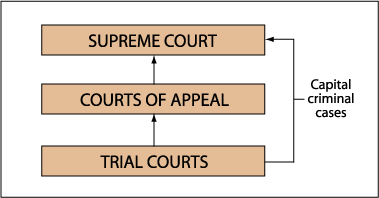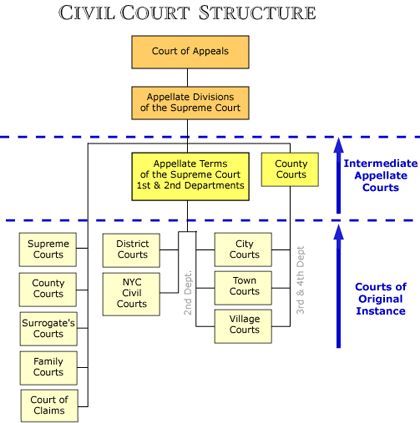Offer Termination by Operation of Law
§ 48 Death or Incapacity of Offeror or OffereeAn offeree’s power of acceptance is terminated when the offeree or offeror dies or is deprived of legal capacity to enter into the proposed contract.
However, both barbi and CALI discuss how irrevocable offers (e.g. options) don’t terminate in this situation. I decided to look up the caselaw. It’s likely that most jurisdictions track to California on this issue.
“An option is an offer and if it is without consideration, it is revoked by the death of the offeror prior to acceptance. *452 If consideration is given, it is a contract binding upon the offeror and upon his successors in interest after his death. See case cited in 6 Cal.Jur., pp. 48–53, §§ 27, 28, 29; Williston, Contracts (Revised Ed.), §§ 61, 62; Cal.Civ.Code, § 1587(4).” (Bard v. Kent (1942) 19 Cal.2d 449, 451–452 [122 P.2d 8, 10])
So an irrevocable offer does not terminate by operation of law in the case of death or incapacity. A successor in interest can be the decedent’s estate, etc.
Merchants
Essays were Merchants are raised.
2018 June
Q1
A
B
2017 June
Q1
A
B
2017 October
Q3
A
B
2016 June
Q2
A
B
2016 October
http://www.calbar.ca.gov/Portals/0/documents/admissions/fyx/FYLSX_Oct2016_SelectedAnswers_R.pdf
Q2
A
2015 October
Q4
A discusses under other issues
B
2014 June
Q4
A
B
2013 June
Q3
B
2013 October
Q1
A
B
2012 June
Q1
A discussed in GL
B interspersed with other issues
Emerson Stafford analyses of Feb 1996 Q1 breach question
Essay text archived here: February 1996 Q1
Some quick notes on procedural history
One of the things we to when briefing cases is the procedural history of the case. While every state has its own court hierarchy, most follow a structure similar to the federal government (i.e. trial -> appellate -> supreme). On the other hand, some are quite different.
While you’ll be exposed to federal cases and cases from every state, a majority of cases you’ll encounter will be from California and New York. Given the populations of those two states, it makes sense that there’s a great deal of litigation coming from them.
 California courts follow a structure very similar to that of the federal government.
California courts follow a structure very similar to that of the federal government.

 New York (NY) Courts have a very different structure.
New York (NY) Courts have a very different structure.

You can follow the link below to see how NY criminal courts are structured. It’s not relevant here because we’re concerned with contract law. At any rate, this should help if you’re confused by the NY court structure.
References
https://www.uscourts.gov/about-federal-courts/court-role-and-structure
https://www.courts.ca.gov/2113.htm
http://www.nycourts.gov/courts/structure.shtml
Tips for briefing
One of my students found this and said they found it extremely helpful. The case it uses as an example, Lucy v. Zehmer, a foundational case for formation, and one of the things we cover in week 2.
Law School Stuff
Before I started this CALI.org hosted blog, I had a tumblr where I collected legal stuff as both a law student and later as a practicing attorney. Some of the entries are likely helpful to students.
https://rds-pcl-outlines.tumblr.com
Q: Does California use the Predominant Factor Test?
A: Yes
See C9 Ventures v. SVC-West, L.P. (2012) 202 Cal.App.4th 1483, 1494 [136 Cal.Rptr.3d 550, 559][“We find no legal test to determine whether a hybrid transaction involving lease of a vessel and sale of its contents is a lease or transaction for the sale of goods. However, in deciding the somewhat analogous question whether a hybrid transaction for goods and services is predominantly a sale of goods governed by the Uniform Commercial Code, or predominantly a transaction for services governed by common law, courts have looked to the essence of the transaction. (Filmservice Laboratories, Inc. v. Harvey Bernhard Enterprises, Inc. (1989) 208 Cal.App.3d 1297, 1305, 256 Cal.Rptr. 735; Bonebrake v. Cox (8th Cir.1974) 499 F.2d 951, 960.) The court may compare the relative cost of the goods and services in the transaction and the purpose of the agreement in order to determine whether it is predominantly a sale of goods or transaction for services. (See Pittsley v. Houser (1994) 125 Idaho 820, 823, 875 P.2d 232, 235 [transaction for purchase and installation of carpet predominantly transaction for sale of goods].) “The test for inclusion or exclusion is not whether [goods and services] are mixed, but, granting that they are mixed, whether their predominant factor, their thrust, their purpose, reasonably stated, is the rendition of service, with goods incidentally involved (e.g., contract with artist for painting) or is a transaction of sale, with labor incidentally involved (e.g., installation of a water heater in a bathroom).” (Bonebrake v. Cox, supra, 499 F.2d at p. 960, fns. omitted.)]

